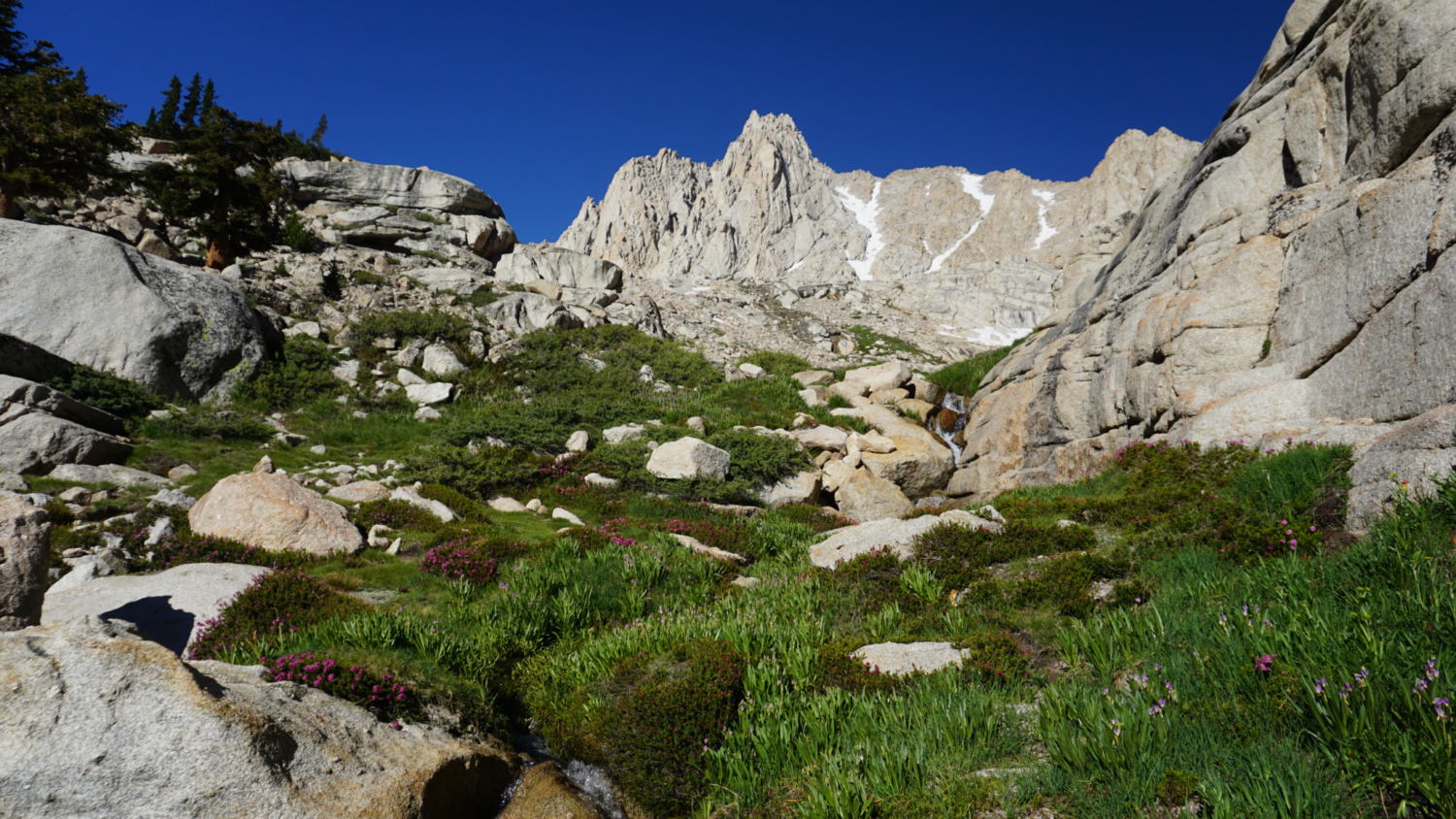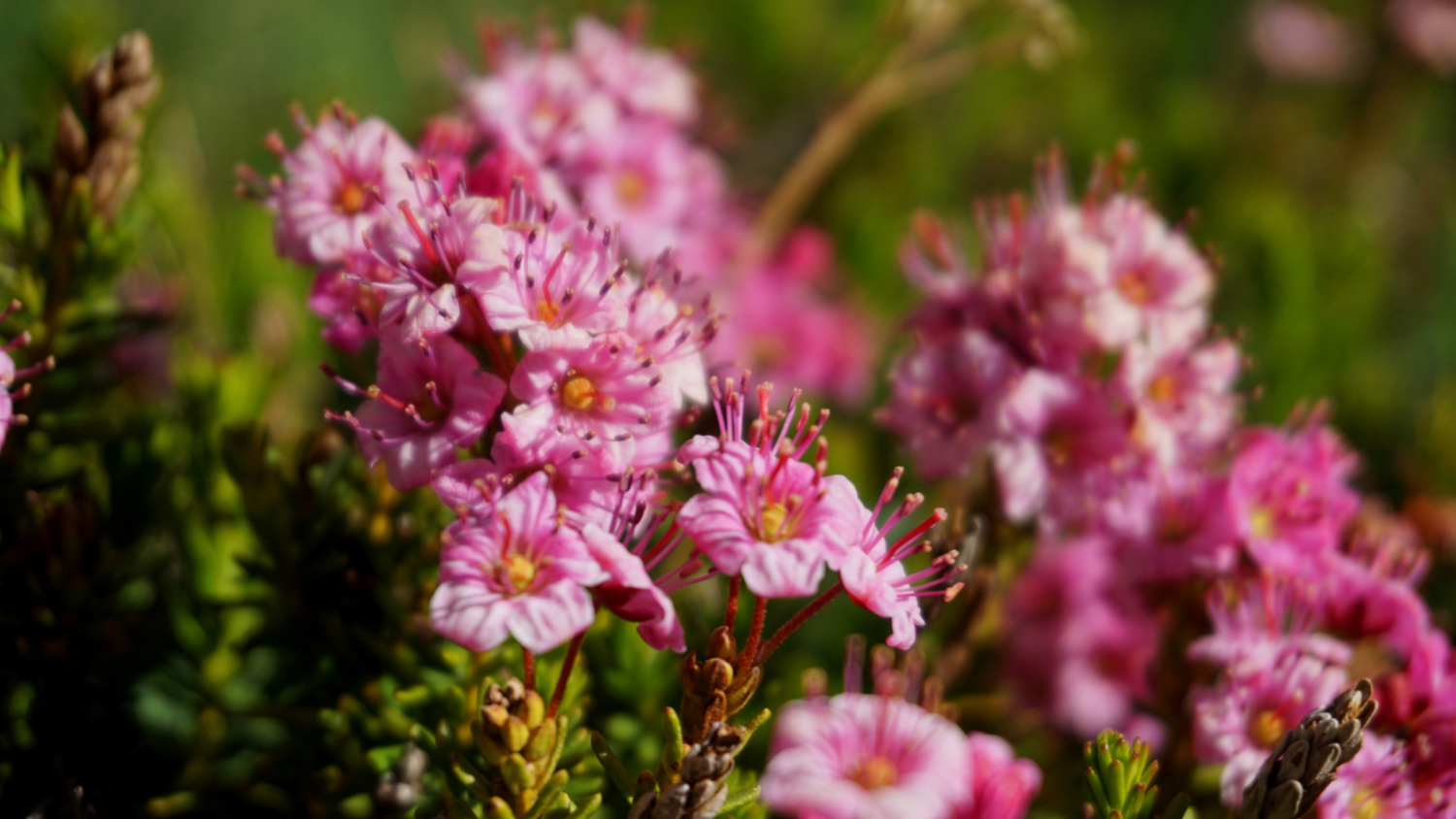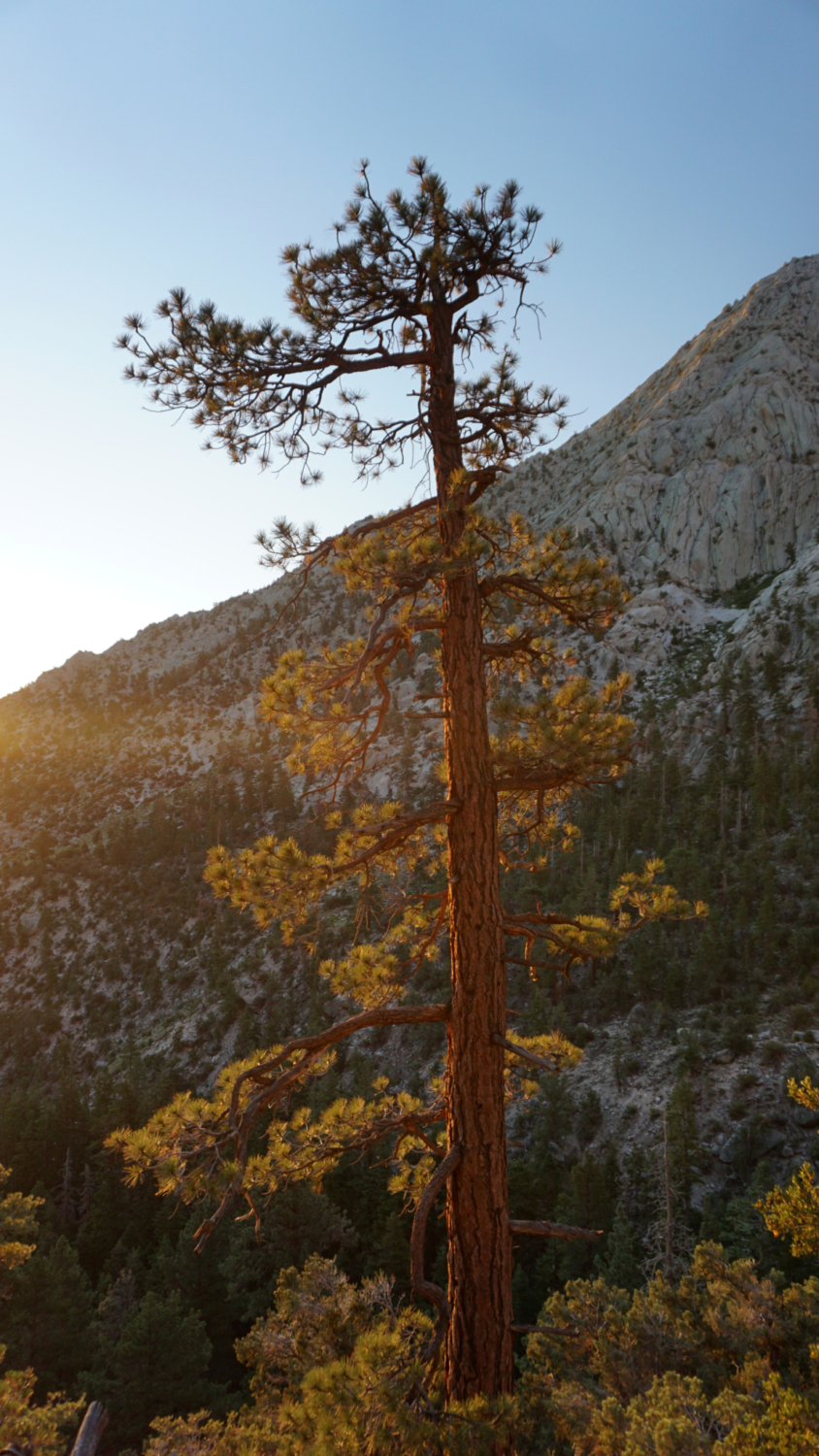About 2.5 miles southeast from the summit of Mt. Whitney (as the Clark’s nutcracker flies), a shimmering body of water fills an austere alpine basin beneath the stern gaze of colossal granite peaks. As hundreds of hiker huff and puff their way up the 99 Switchbacks after fighting a fierce battle with a convoluted permit system, a mere handful of people work their way up the challenging Meysan Lakes Trail. Sure, few of your friends will know what you’re talking about when you brag about bagging this trail (as opposed to Whitney), but your compensation is a generous helping of solitude and some gorgeous Sierran scenery.

Several challenges add up to make this a demanding hike. First, the trail is an unrelenting uphill climb that becomes progressively steeper and less discernible until the trail peters out altogether. A rough, informal path marked with cairns leads the way from Camp Lake to Meysan Lake, which adds a bit of navigational responsibility. The trail follows a south-facing slope through the entirety of the route, and if you get a late start on a warm day, you are likely to have a very uncomfortable hike. All of this adds up to a hefty day of hiking or a rugged overnight, but if you’re up for the challenge you will earn yourself a memorable experience.

Backpackers seeking to camp at any of the five lakes fed by Meysan Creek must obtain a backcountry permit from Inyo National Forest. Inyo’s thoroughly modern online system operates through Recreation.gov. Simply select the trailhead (Meysan Lakes), the dates you’re looking to camp, and purchase your permits. You will need to pick your permit up before your hike from the Eastern Sierra Interagency Visitor Center.

Lone Pine Creek
The Meysan Lakes Trail starts from a modest roadside parking area just east of the entrance to Whitney Portal Campground. Follow the gated access road downhill into the campground, and then head due south across the campground. Along the way, you will cross Lone Pine Creek and pass a junction with the Whitney Portal National Recreation Trail before reaching an access road that serves a number of summer homes. Turn left onto this access road and look for the signed Meysan Lakes Trail on the right.

The Meysan Lakes Trail wends uphill for about a quarter of a mile before merging again with the summer home access road. Turn right once again on the signed Meysan Lakes Trail to leave the access road behind for good. Once onto the trail, you pass through a mixture of high desert flora, including pinyon pines, mountain mahogany, and Great Basin sagebrush. Indicating the boundary zone between desert and mountain, Jeffrey pines and white fir are also present. As the trail winds around the base of the ridge dividing the Meysan Creek and Lone Pine Creek drainages, it gradually turns to the south making occasional switchbacks to avoid various obstacles.

Jeffrey pine
Over the next 2.5 miles, the trail continues to switchback in a generally southern direction through a gradually changing schema of flora. Limber pines begin to replace pinyons around 8,500′, and foxtail and lodgepole pines replace Jeffrey pines around 9,200′. The moderate grade and consistent switchbacking gets a bit monotonous after a while, and you may even become inured to the magnificent view down-canyon toward Owens Valley, but you may soon feel a bit wistful about this section once you reach the 3.3 mile mark after cresting the main headwall of the Meysan Creek Canyon.

Foxtail and limber pines
A very brief reprieve arrives at a flat, shaded section at 3.3 miles. This is a good place to rest up and collect yourself since the going is about to get a lot tougher. After crossing a tributary stream, the trail resumes its uphill climb on a steeper, rockier, and less-defined tread. You dip in and out of the trees as you gain altitude on your way up to a junction with an informal trail that leads to Grass and Peanut Lake. Reaching either lake is a cross-country affair, and since I didn’t record the track on my GPS, you will need to rely on good, old-fashioned map and compass (you shouldn’t rely on GPS tracks exclusively anyway since technology can fail at the worst time).

A small lake near the Grass Lake junction

Camp Lake
Keep right at the Grass Lake junction (4.2 miles) and continue winding your way uphill through stately foxtail pines, many of which are well over a thousand years old. After dropping a dispiriting 150′ down into a dry meadow, the trail once again climbs up and over another moraine to reach the edge of Camp Lake (4.7 miles). This diminutive lake is in the process of reverting to meadow; there is a lot more meadow than lake, but you will find nearby camping with a modest amount of shade.

Meysan Lake
The final bit of hiking leads you to the showstopper on this route: Meysan Lake. To find the informal path, approach a verdant ravine fed by an intermittent stream and begin climbing. About only .1 mile away from the end of the formal trail, turn left to begin climbing the dry, rocky slope above Camp Lake at an oblique angle. Cairns mark a handful of diverging paths that all end up at the same spot: a shallow saddle and a tiny tarn about 200′ above Meysan Lake. To reach Meysan Lake itself, carefully descend a rocky slope to a series of granitic slabs on the north shore. From here, you can set up camp or explore at your leisure.

Note that you should avoid attempting to leave Meysan Lake by way of its outlet. Not only is the descent along the outlet perilously steep, but it will also deposit you far away from the Meysan Lakes Trail at Camp Lake. You may be tempted given that you have a 200′ climb out of the basin before you can start descending back to the trailhead, but it’s really not worth it.
Tags: Grass Lake, Inyo National Forest, John Muir Wilderness, Meysan Lake, Meysan Lakes, Meysan Lakes Trail, Mt. Whitney, Peanut Lake, Whitney Portal






























